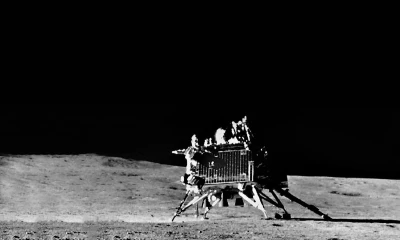Edited by Deepali Verma
Laser instrument onboard a NASA spacecraft orbiting the Moon has been able to successfully ping the Vikram lander of Bharat’s Chandrayaan-3 mission, said the US space agency. The laser beam was transmitted and reflected between the Lunar Reconnaissance Orbiter (LRO) and an Oreo-sized device on Vikram lander, which opened the door to a fairly fresh style of precisely locating targets on the Moon’s surface, added NASA.
The lander was positioned 100 kilometres away from LRO, close to Manzinus crater in the Moon’s south pole region, when LRO transmitted laser pulses toward it on December 12 2023.
Once the orbiter had registered light that had bounced back from a small NASA retroreflector aboard Vikram, NASA scientists were affirmative that their technique had finally worked.
Sending laser pulses towards an object and then proceeding to measure how long it takes for the light to bounce back is a relatively common practice to track the locations of Earth-orbiting satellites from the ground.
However, employing the technique in reverse, that is to send laser pulses from a moving spacecraft to a stationary one to determine its precise location comes with many applications at the Moon, remarked the scientists.
“We’ve displayed our ability to locate our retroreflector on the surface from the Moon’s orbit,” said Xiaoli Sun, leader of the team at NASA’s Goddard Space Flight Center, that was responsible for developing the retroreflector on Vikram as part of a collaboration between NASA and Indian Space Research Organization (ISRO).
“Subsequently, we improve the technique so that it can become routine for missions that want to employ the use of these retroreflectors in the future,” Sun said in a NASA statement.
At 2 inches, or 5 centimetres of width, NASA’s small but mighty retroreflector by the name of a Laser Retroreflector Array, is equipped with eight quartz-corner-cube prisms set into a dome-shaped aluminium frame.
The scientist’s view of the device is that it is simple and durable, requiring neither power nor maintenance, and can last for decades. The retroreflector reflects light coming in from any direction right back to its source, said NASA.
The suitcase-size retroreflectors by reflecting light back to Earth reveals that the Moon is moving away from our planet at an estimated rate of 3.8 centimetres per year, added the US space agency.
ISRO, in response to the recent development, said the Laser Retroreflector Array (LRA) on the Chandrayaan-3 lander has begun serving as a fiducial point (precisely located markers for reference) on the Moon.
“NASA’s Lunar Reconnaissance Orbiter (LRO) achieved a laser range measurement by employing the LRA and has successfully detected signals reflected by it on December 12, 2023. The range made use of the Lunar Orbiter Laser Altimeter (LOLA) on the LRO. The observation occurred during lunar night time, with the LRO ascending to the east of Chandrayaan-3,” the Indian space agency added.

















